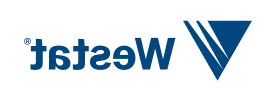This website uses cookies so that we can provide you with the best user experience possible. Cookie information is stored in your browser and performs functions such as recognizing you when you return to our website and helping our team to understand which sections of the website you find most interesting and useful.
Can alternative developmental math pathways accelerate college success?
Evaluating the impact and cost effectiveness of the Maryland Mathematics Reform Initiative First in the World (MMRI-FITW) grant

Client
University of MarylandChallenge
Developmental education costs institutions $7 billion annually, with yearly costs to students and their families of $1.3 billion. Supported by $3,000 in loans per developmental course or $380 million in annual federal student loan debt, many policymakers see developmental mathematics placement as a devastating intersection where “access” leads to student debt, disproportionately affecting students of color, adults, first-generation college students, and those from low-income backgrounds.
The high schools they attend are more likely to lead to deficits in mathematics, and so these students often spend financial aid and personal savings on noncredit developmental courses and drop out before they graduate.
The University System of Maryland (USM) wants to address the mathematics “pipeline” issues that have created significant barriers to progress for these postsecondary students. The Maryland Mathematics Reform Initiative First in the World (MMRI-FITW) grant is a collaborative effort between a selection of 4-year public USM institutions and 2-year community colleges in Maryland to develop and implement an alternative developmental math pathway to more efficiently prepare students for college-level statistics, the math required by most social science and humanities degrees.
As part of the grant, USM hired 趣赢平台 to evaluate whether the statistics pathway accelerated developmental students’ progress into credit-bearing postsecondary courses and helped more of those students reach certificate or degree completion with a goal of informing better policies and improving educational equity.
Solution
趣赢平台 incorporated input of project leaders, expert advisors, and campus liaisons. Then, in close collaboration with USM, we refined the MMRI-FITW project quasi-experimental evaluation. We identified high-priority student subgroups aligned with changes in the Integrated Postsecondary Education Data System (IPEDS) to ensure the study’s policy relevance for the 8 diverse participating institutions (5 community colleges and 3 USM universities), in addition to generating evidence for the field.
趣赢平台 provided 4 campuses that supplied at least 65 students to each group (N = 130) with treatment effect estimates for their students, added a cost-effectiveness component, submitted 2 articles highlighting study findings, and presented at 3 national conferences with USM, with another planned.
Results
Results show significantly higher percentages of students who participated in the program (n = 748) passed developmental math (in fewer semesters) and enrolled in college-level math compared to comparison students (n = 1,293).
Once enrolled, participating students passed, remained in school, or graduated at rates equal to comparison students regardless of race/ethnicity, age, socioeconomic, or enrollment status.
Reforms cost 7% less and were 36% more cost-effective for increasing statistics enrollment than traditional approaches.
Since students who complete degrees earn more than those who do not, these findings reduce structural inequities by offering students an alternative pathway to accelerate their progress through college.
Learn more:
Results of Maryland’s System-Level Developmental Mathematics Pathway Initiative (PDF)
Cost-Effectiveness of a Statistics-Based Approach to Developmental Mathematics
Focus Areas
Education Learning AccelerationCapabilities
Equity Evaluation and Mixed-Methods Research Impact Evaluation Outcome Evaluation-
Expert Interview
Leveraging Paradata and AI to Improve Survey Participation RatesJanuary 2025
The steady decline in survey response rates has been a major concern for many researchers for some time. Low response rates not only erode the…
-
Perspective
Public Health in Action: 趣赢平台 APHA 2024 HighlightsNovember 2024
趣赢平台 staff made their mark at the 2024 American Public Health Association (APHA) Annual Meeting and Expo, which was held in Minneapolis, Minnesota, October 27-30.…
-
Expert Interview
Timely Data-Driven Solutions for Nursing HomesNovember 2024
The COVID-19 pandemic has had a devastating impact on the nursing home sector, resulting in hundreds of thousands of deaths of residents and staff and…



